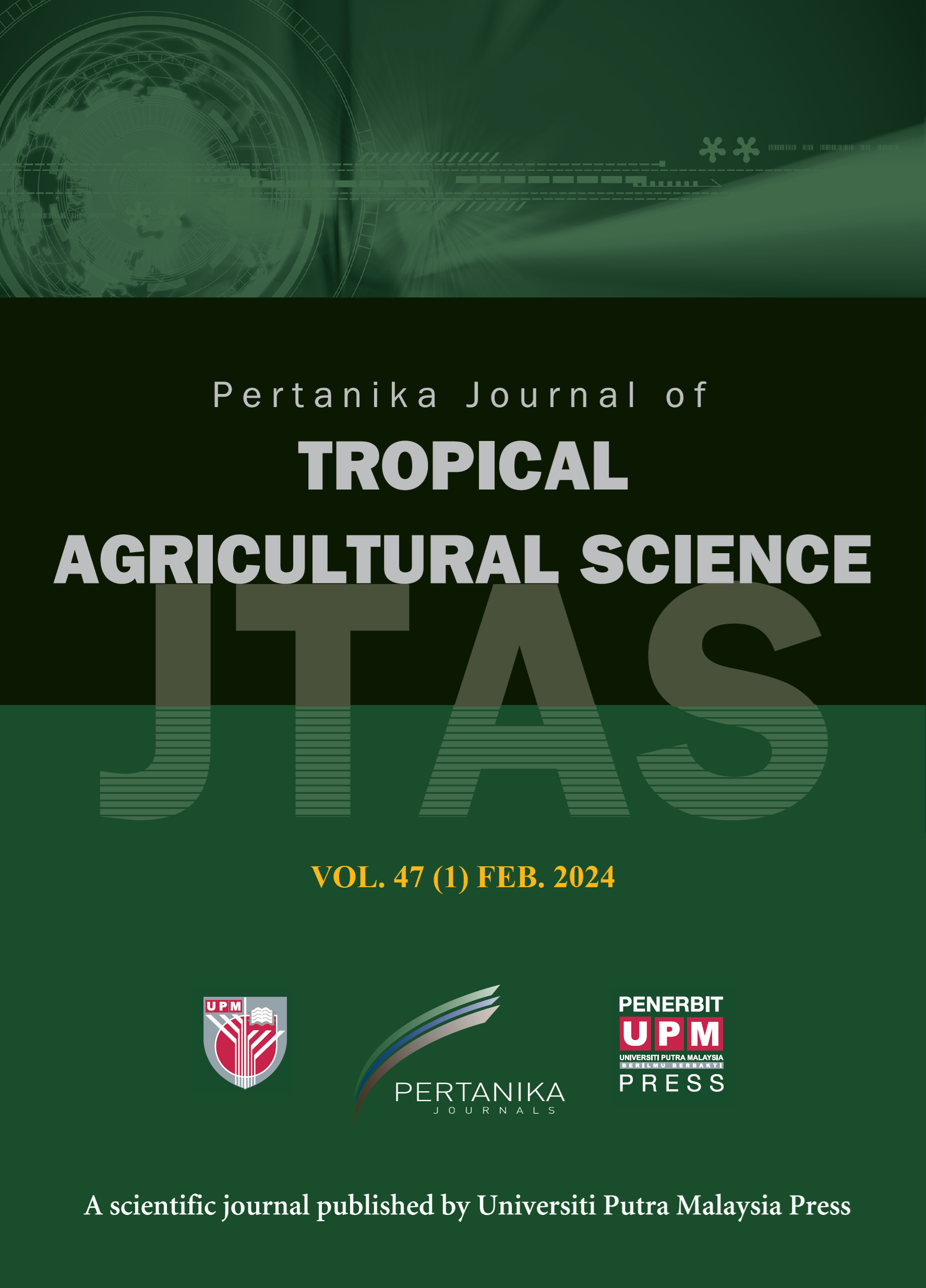PERTANIKA JOURNAL OF TROPICAL AGRICULTURAL SCIENCE
e-ISSN 2231-8542
ISSN 1511-3701
Upland Rice Root Characteristics and Their Relationship to Nitrogen Uptake
Zaharah, A.R and Hanafi, M.M.
Pertanika Journal of Tropical Agricultural Science, Volume 32, Issue 2, August 2009
Keywords: Upland rice, root architecture, nitrogen fertilizer, nitrogen use efficiency, nitrogen derived from fertilizer
Published on:
Nitrogen and phosphorus efficiencies are the main constraints to food production in the sub-humid and humid tropic soils. A laboratory and glasshouse study was initiated to examine the differences in the root architecture of Malaysian upland rice landraces and relate them to efficiency of the nitrogen fertilizer uptake. Six upland rice landraces, obtained locally, were soaked in water and allowed to germinate using the cigar role method. The seedlings were fertilized with a complete nutrient solution daily and the roots which were allowed to develop after 14 days were measured using the WINRHIZO. The same landraces were planted in the glasshouse in polybags containing 25 kg soil in four replications. N-15 labelled urea was applied at 170 kg N/ha and N use efficiency was measured at harvest. Significant differences in root length, surface area, root volume, average root diameter, and number of forks, between the 6 landraces were studied. Nitrogen in the plant (derived from fertilizer applied) was found to range from 6.22 – 27.6%. Nevertheless, a poor correlation was obtained between the length of root and the dry matter yield and the total N uptake. Five of the landraces tested showed a good potential in taking up the fertilizer N applied.
ISSN 1511-3701
e-ISSN 2231-8542




